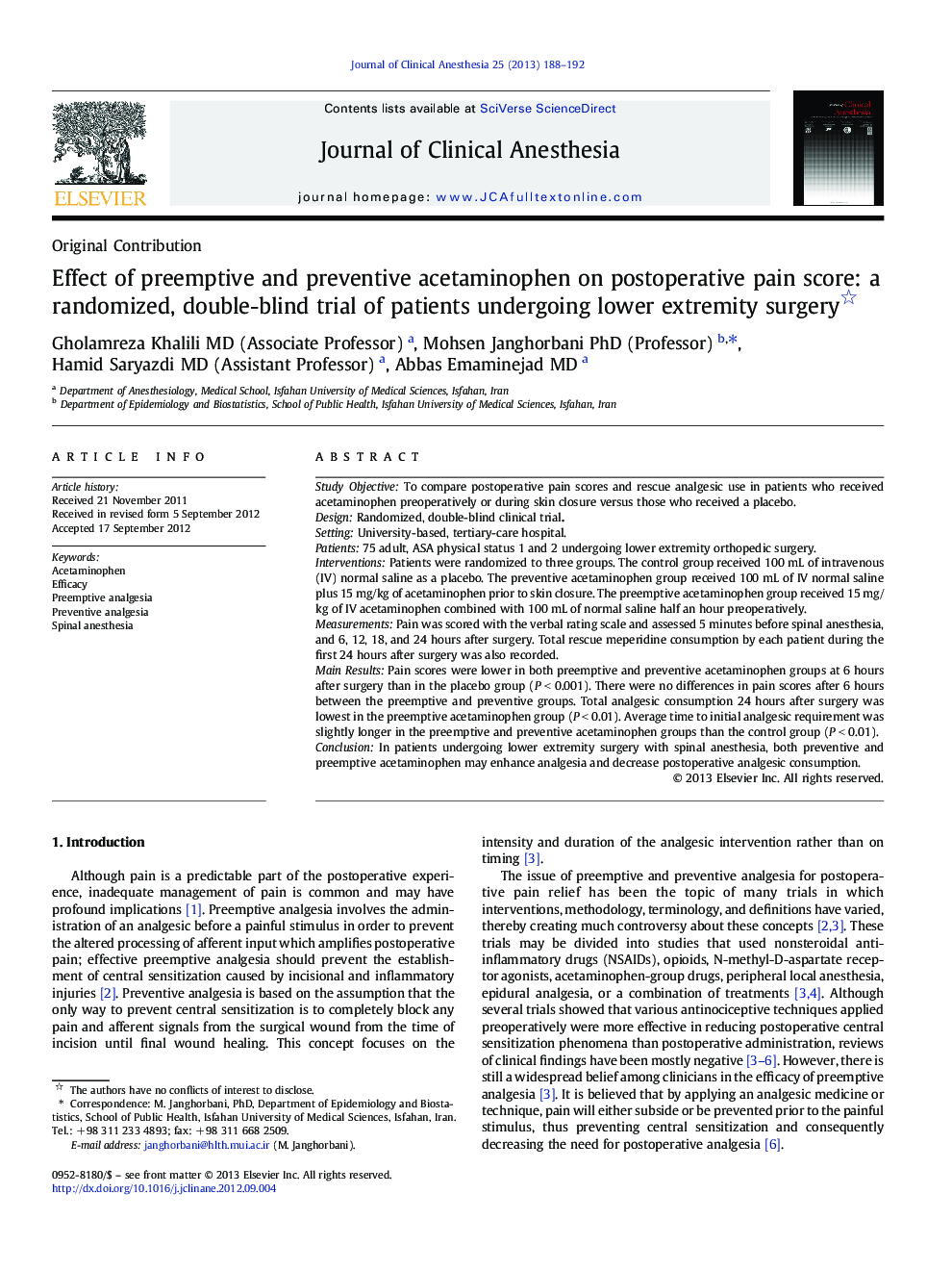| Article ID | Journal | Published Year | Pages | File Type |
|---|---|---|---|---|
| 2762879 | Journal of Clinical Anesthesia | 2013 | 5 Pages |
Study ObjectiveTo compare postoperative pain scores and rescue analgesic use in patients who received acetaminophen preoperatively or during skin closure versus those who received a placebo.DesignRandomized, double-blind clinical trial.SettingUniversity-based, tertiary-care hospital.Patients75 adult, ASA physical status 1 and 2 undergoing lower extremity orthopedic surgery.InterventionsPatients were randomized to three groups. The control group received 100 mL of intravenous (IV) normal saline as a placebo. The preventive acetaminophen group received 100 mL of IV normal saline plus 15 mg/kg of acetaminophen prior to skin closure. The preemptive acetaminophen group received 15 mg/kg of IV acetaminophen combined with 100 mL of normal saline half an hour preoperatively.MeasurementsPain was scored with the verbal rating scale and assessed 5 minutes before spinal anesthesia, and 6, 12, 18, and 24 hours after surgery. Total rescue meperidine consumption by each patient during the first 24 hours after surgery was also recorded.Main ResultsPain scores were lower in both preemptive and preventive acetaminophen groups at 6 hours after surgery than in the placebo group (P < 0.001). There were no differences in pain scores after 6 hours between the preemptive and preventive groups. Total analgesic consumption 24 hours after surgery was lowest in the preemptive acetaminophen group (P < 0.01). Average time to initial analgesic requirement was slightly longer in the preemptive and preventive acetaminophen groups than the control group (P < 0.01).ConclusionIn patients undergoing lower extremity surgery with spinal anesthesia, both preventive and preemptive acetaminophen may enhance analgesia and decrease postoperative analgesic consumption.
